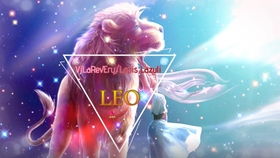
Leo the Lion Constellation Facts
Leo, the lion constellation, is one of the most recognizable constellations in the night sky. Known for its majestic lion shape, it has fascinated skywatchers for centuries. Let’s delve into the fascinating facts about this celestial lion.
Origin and Mythology

The Leo constellation is one of the 48 constellations listed by the 2nd-century astronomer Ptolemy. It is located in the northern hemisphere and is best seen from June to August. The constellation is named after the lion, a symbol of strength and courage. In Greek mythology, Leo is associated with the Nemean lion, a creature that terrorized the region of Nemea until it was killed by Hercules as one of his twelve labors.
Coordinates and Visibility

Leo is located in the northern celestial hemisphere, between the constellations of Crater, Coma Berenices, and Virgo. Its right ascension is 10 hours and 31 minutes, and its declination is +16 degrees. The constellation is visible from latitudes between +90掳 and -40掳. It is best observed from the Northern Hemisphere, where it is prominent in the summer sky.
| Right Ascension | Declination | Apparent Magnitude |
|---|---|---|
| 10h 31m | +16掳 | 1.4 to 3.4 |
Stars and Deep Sky Objects

Leo is home to several notable stars and deep sky objects. The brightest star in Leo is Regulus, also known as Alpha Leonis. It is a main-sequence star with an apparent magnitude of 1.4 and is approximately 79 light-years away from Earth. Other prominent stars in Leo include Algieba, Denebola, and Zosma.
One of the most famous deep sky objects in Leo is the Leo Triplet, a group of three galaxies. The galaxies, Messier 65, Messier 66, and NGC 3628, are located about 35 million light-years away from Earth. They are known for their spiral shapes and are easily visible through a telescope.
| Galaxy | Distance | Apparent Magnitude |
|---|---|---|
| Messier 65 | 35 million light-years | 9.3 |
| Messier 66 | 35 million light-years | 8.9 |
| NGC 3628 | 35 million light-years | 9.5 |
Leo’s Celestial Movements
Leo is a constellation that moves across the sky throughout the year. It reaches its highest point in the sky around midnight in June, making it a prime target for stargazers during the summer months. The constellation moves westward in the sky, and its stars appear to revolve around the celestial north pole.
Leo’s Cultural Significance
Leo has held significance in various cultures throughout history. In ancient Egypt, the constellation was associated with the god Ra, the sun god. The lion was considered a symbol of strength and power, and the Egyptians believed that the sun god Ra would defeat the darkness each night.
In Chinese astronomy, Leo is part of the constellation known as “Shen”, which represents a celestial dragon. The Chinese also associated the constellation with the god of war, Guangong, who was depicted as a lion.
Conclusion
Leo the lion constellation is a fascinating celestial object that has captivated skywatchers for centuries. Its rich mythology, prominent stars, and deep sky objects make it a must-see for any amateur astronomer. Whether you’re interested in mythology, astronomy, or simply enjoying the beauty of the night sky, Leo has something to offer everyone.




